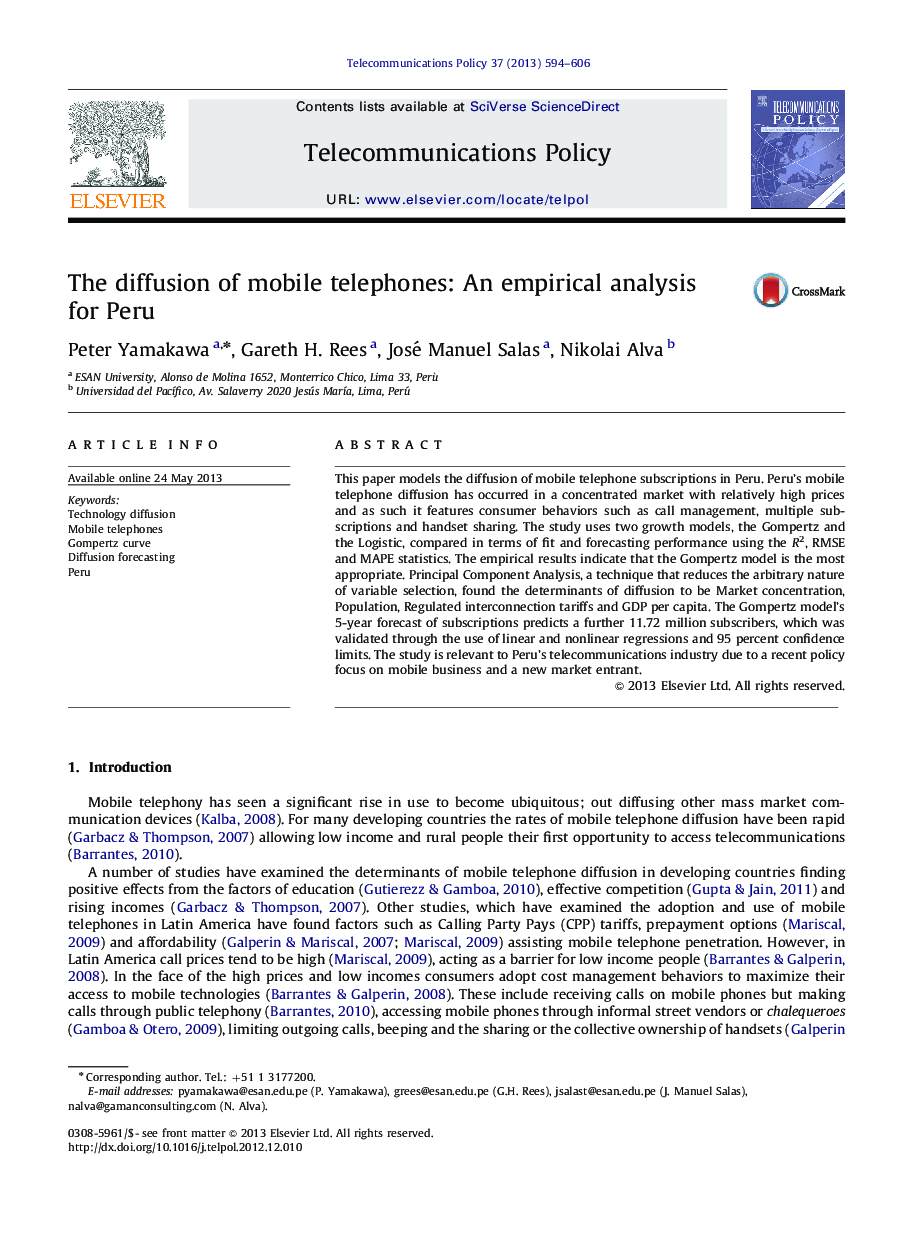| Article ID | Journal | Published Year | Pages | File Type |
|---|---|---|---|---|
| 556939 | Telecommunications Policy | 2013 | 13 Pages |
This paper models the diffusion of mobile telephone subscriptions in Peru. Peru's mobile telephone diffusion has occurred in a concentrated market with relatively high prices and as such it features consumer behaviors such as call management, multiple subscriptions and handset sharing. The study uses two growth models, the Gompertz and the Logistic, compared in terms of fit and forecasting performance using the R2, RMSE and MAPE statistics. The empirical results indicate that the Gompertz model is the most appropriate. Principal Component Analysis, a technique that reduces the arbitrary nature of variable selection, found the determinants of diffusion to be Market concentration, Population, Regulated interconnection tariffs and GDP per capita. The Gompertz model's 5-year forecast of subscriptions predicts a further 11.72 million subscribers, which was validated through the use of linear and nonlinear regressions and 95 percent confidence limits. The study is relevant to Peru's telecommunications industry due to a recent policy focus on mobile business and a new market entrant.
► Brief history of Peruvian mobile telephone industry. ► Identification of most appropriate model for diffusion mobile telephony for Peru. ► The Gompertz curve was found to be more appropriate than Logistic curve. ► Identification of determinants of diffusion using Principal Component Analysis. ► Five years forecast of mobile telephone market potential verified using econometric models.
